Thinking of visiting Tuscany? This complete Tuscany travel guide covers the climate, accommodation, and best places to visit in every region.
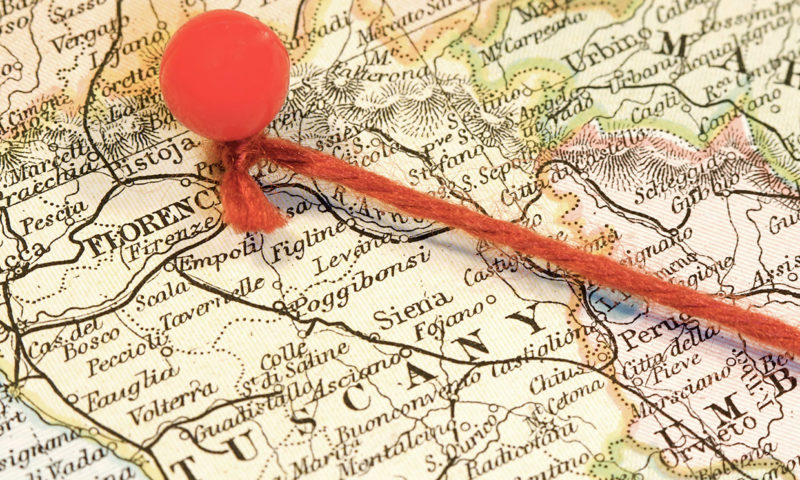
When many people think of Tuscany, they imagine rolling hills bathed in golden light, scattered with olive groves, vineyards, and timeless stone farmhouses. That postcard-perfect image is real, but it’s only one side of this richly varied destination.
Tuscany remains the most popular of all Italian regions, and it’s easy to see why. Tourists and would-be property buyers alike are drawn to its stunning countryside, Renaissance cities, and a cultural heritage that’s second to none. From the historic streets of Florence to the wild coastal landscapes of the Maremma, and from alpine ski slopes to sun-drenched wine estates, Tuscany offers far more than first meets the eye.
While property prices can be high in some areas, the region’s allure never fades. Italophiles continue to flock here, enchanted by its lifestyle, climate, and history. And for the patient traveller or buyer, there are still plenty of lesser-known towns and hidden gems to explore that don’t cost the earth.
This Tuscany travel guide will take you through the region’s highlights, from well-known hotspots to off-the-beaten-path locations, with tips on where to go, when to visit, and what makes each part of Tuscany unique.
Jump to:
- Tuscany at a glance
- Region-by-region Tuscany travel guide
- When to visit: Weather in Tuscany by season
- Tuscany travel tips: The essential info you need to know
- Tuscany FAQs
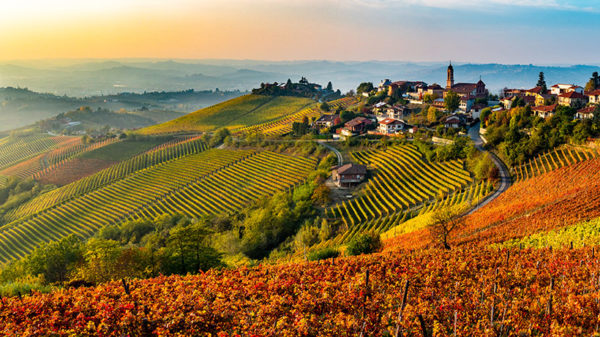
Tuscany travel guide in brief: what makes the region special
Here’s a quick snapshot of what makes Tuscany so enduringly appealing, whether you’re planning your first visit or dreaming of a long-term stay.
The region
When we think of Tuscany, we picture verdant rolling hills dotted with centuries-old farmhouses glowing in the late afternoon sun. Winding roads lined with cypress trees stand like sentries, guiding you through landscapes that feel lifted from a Renaissance painting. But there’s far more to the Tuscany landscape than this iconic scene.
From rugged mountains and wild coastlines to bustling cities and peaceful hilltop towns, the region offers remarkable diversity, ideal whether you’re seeking a rural escape, a city base, or a home with a view.
The climate
The weather in Tuscany varies by location. Coastal areas enjoy a generally mild climate, while inland regions can become surprisingly cold in winter, especially at higher altitudes. Rainfall is relatively low overall, with most showers falling between late autumn and early spring.
For comfortable travel conditions and fewer crowds, the best times to visit Tuscany are spring (April–June) and autumn (September–October).
The culture
In terms of post-medieval Western European culture, Florence is unrivalled, but it’s far from the only draw. Tuscany’s cultural richness extends to Siena, Lucca, Pisa, Arezzo and beyond, with each town and city offering its own architectural gems, art history, and traditions. From Renaissance masterpieces to medieval festivals, Tuscany culture runs deep and wide.
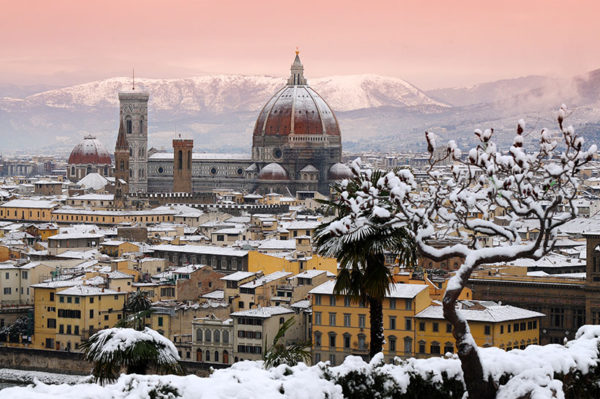
Regional Tuscany travel guide: where to go and what to see
Tuscany’s charm lies in its diversity. Each area of the region offers a different experience, from alpine adventures in the north to Renaissance riches in the centre and coastal escapes in the west. In the region-by-region Tuscany travel guide below, we explore the key areas to help you decide where to go and what to see, with inspiration for short breaks, road trips, long-term stays, and more.
Northern Tuscany: Lucca, the Apuan Alps and seaside towns
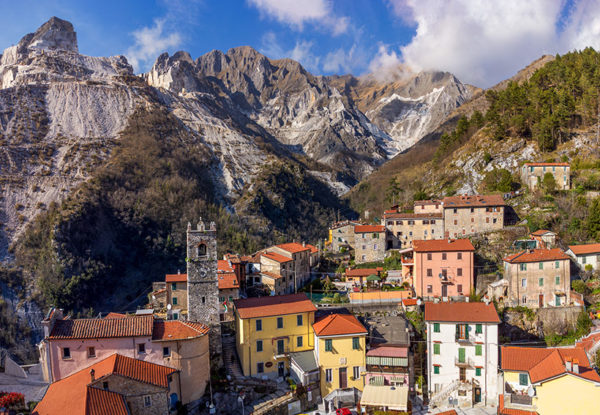
We start with North Tuscany, a region where soaring mountains meet the sea, and historic towns are tucked between chestnut forests and sun-drenched hillsides.
Bordered by Liguria and Emilia-Romagna, this part of Tuscany offers a fascinating mix of nature, culture and coastal charm.
On the coast, the elegant resort town of Forte dei Marmi is known for its golden beaches, high-end boutiques and namesake fortress. Just down the shore, Viareggio is the beating heart of the northern Tuscan Riviera, famous for its Liberty-style architecture and vibrant annual carnival.
Inland, the dramatic Apuan Alps and Apennines dominate the landscape. Head to Abetone, north of Pistoia, for some of the best skiing in Tuscany, or hike through the chestnut forests of the Garfagnana valley, north of Lucca.
The nearby Mugello valley, just above Florence, offers peaceful scenery and small traditional villages.
The walled city of Lucca is a highlight of northern Tuscany. Renowned for its preserved 16th-century ramparts, elegant piazzas, and ancient Roman roots, it’s a must-visit for history lovers. Stroll down Via Fillungo, visit the old forum, and soak up the city’s relaxed charm.
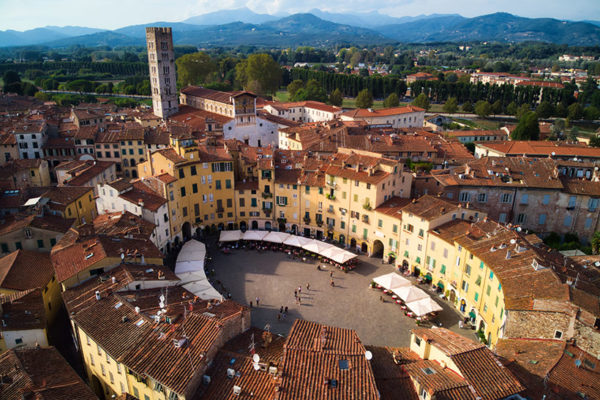
To the east lies Montecatini Terme, one of Italy’s classic spa towns, known for its thermal spas and Art Nouveau architecture. Nearby Pistoia is often overlooked, but this medieval town is a hidden gem filled with churches, gardens and beautiful nursery farms.
Along the northern coast, the towns of Massa and Carrara are still home to the ancient marble quarries that once supplied Michelangelo himself. The gleaming white stone is still extracted here today and is one of the area’s most famous exports.
Florence and the heart of Tuscany
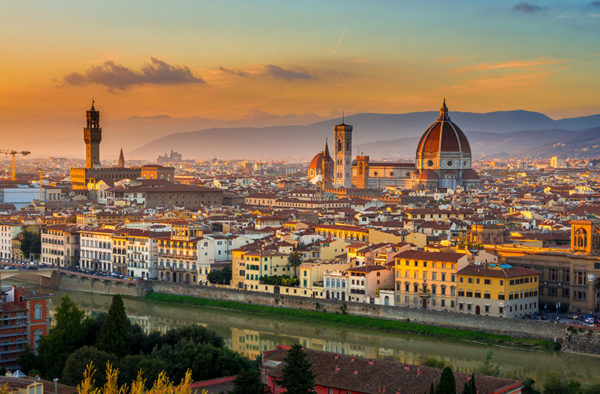
Florence needs little introduction. As the birthplace of the Renaissance and the beating heart of Tuscany, it’s a city that captivates travellers with its art, architecture and atmosphere. From the iconic dome of the Duomo to the masterpieces of the Uffizi Gallery, this is the cultural capital of the region and one of the most beautiful cities in Europe.
And it’s no wonder this breathtaking region has inspired centuries of visitors. In the 18th and 19th centuries, Florence was a key stop on the Grand Tour, and the city’s pull has only grown stronger. With its concentration of Renaissance art and historic buildings, Florence rewards both first-time visitors and seasoned Italophiles.
For a breath of fresh air, head into the hills around Florence, once the summer retreats of wealthy merchants. These peaceful green ridges offer spectacular views and make a perfect base for day trip, or even a permanent move if you’re looking for a quieter setting with easy access to the city.
Eastern Tuscany: Arezzo, Casentino Valley and the Umbrian border
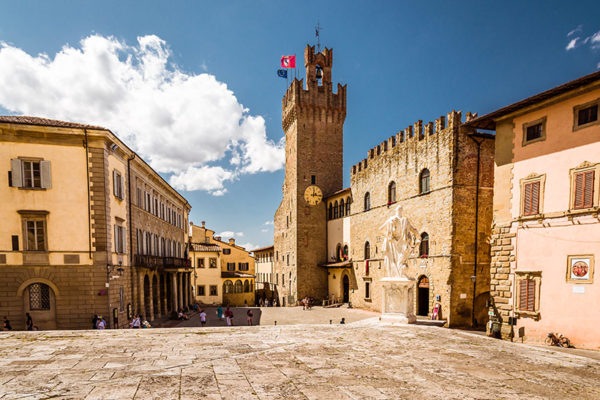
Eastern Tuscany offers a more tranquil and wooded landscape than other parts of the region, rich in spiritual sites, cultural heritage, and timeless towns. From the mountain monasteries of the Casentino Valley to the lively piazzas of Arezzo, this area rewards those looking for a slower, more reflective pace of travel.
One of Tuscany’s most underappreciated cities, Arezzo is full of surprises. History buffs and culture lovers will enjoy the Joust of the Saracens, a lively medieval re-enactment held twice a year, as well as the city’s famed monthly antiques fair, one of the largest in Italy. With its cobbled streets and Renaissance architecture, Arezzo is a must for anyone seeking a less tourist-heavy taste of Tuscany culture.
To the north, the Casentino Valley stretches through dense forests and hilltop villages. This deeply atmospheric part of Tuscany is home to Poppi, with its imposing castle, and the sacred sites of Vallombrosa, Camaldoli, and La Verna — monasteries that remain active centres of pilgrimage and contemplation.
South of Arezzo, the hill town of Cortona is one of the most picturesque destinations in eastern Tuscany. Popularised by the book Under the Tuscan Sun, it still draws summer crowds to its cultural events, including the Tuscan Sun Festival.
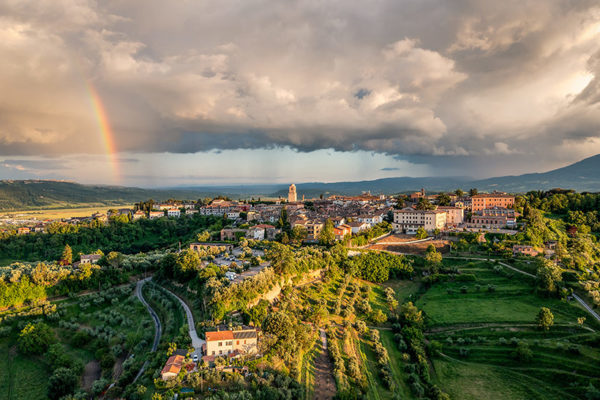
Nearby Chiusi, surrounded by gentler countryside, offers a fascinating glimpse into Etruscan history, with tombs and a well-preserved underground museum.
On the Umbrian border, Sansepolcro is known as the birthplace of Renaissance painter Piero della Francesca, and makes an excellent cultural detour. If shopping is more your style, head to the Arno Valley outlets, where a string of designer shops adds a modern twist to your Tuscan itinerary.
Western Tuscany: Pisa and the Etruscan coast
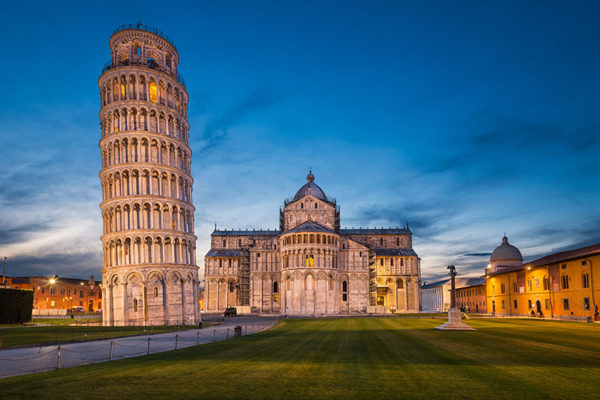
Western Tuscany stretches along a varied and beautiful coastline, where historic cities meet fishing villages, wild nature reserves and wine-rich countryside. From Pisa’s iconic monuments to the Maremma’s untamed shores, this part of the region offers a distinct blend of history, culture and coastal charm.
The city of Pisa is best known for its world-famous Leaning Tower, but it also boasts a rich naval history, Romanesque architecture, and a vibrant student population that keeps the city lively year-round.
The Campo dei Miracoli (Square of Miracles) is home to the tower, cathedral and baptistery — a UNESCO World Heritage Site and essential stop for first-time visitors.
South of Pisa, the Tuscan coast unfolds in a series of charming fishing towns and scenic beaches. Head to San Vincenzo for seaside relaxation or visit Castiglione della Pescaia, an upmarket coastal town with a medieval fortress and views across to the isle of Elba.

For nature lovers, the Parco Naturale della Maremma is a must. Hiking through this vast, protected park with wild beaches, walking trails, and roaming cattle can’t be missed.
This stretch of coastline is steeped in Etruscan history, particularly at Roselle, just north of Grosseto. Once a thriving ancient city, Roselle fell into decline and became a malarial swamp until its rediscovery and restoration in the 20th century. Today, you can explore its perimeter walls, amphitheatre and archaeological remains — a fascinating detour for history enthusiasts.
Also in this area, the Parco Naturale della Maremma, Tuscany’s vast, protected park with wild beaches, walking trails, and roaming cattle, is a must-visit for nature lovers.
Not far from the coast is Bolgheri, a picture-perfect village reached via a five-kilometre avenue of 200-year-old cypress trees. This is the birthplace of Sassicaia, one of the original Super Tuscan wines, and the surrounding vineyards continue to produce some of Italy’s most prestigious reds.
Further inland, the hill towns of Volterra and Massa Marittima are packed with architectural treasures, Etruscan ruins and panoramic views. These lesser-known gems offer a slower pace, far from the tourist crowds, and are ideal for day trips or longer stays.
Southern Tuscany: Siena, Val d’Orcia and beyond
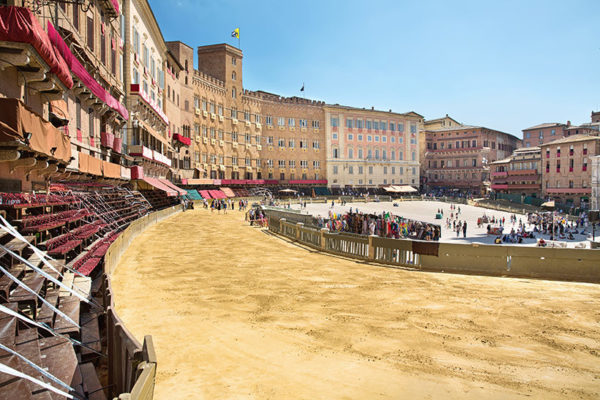
Southern Tuscany is where the region’s medieval heart and rural soul truly shine. From Siena’s historic streets to the rolling vineyards of the Val d’Orcia, this area offers a perfect blend of tradition, natural beauty and timeless Tuscan charm.
One of the most striking cities in Tuscany, Siena is a proud and fiercely independent place, famous for its biannual Palio horse race, which brings together neighbourhood rivalries, pageantry and passion in the dramatic setting of the Piazza del Campo. Beyond the Palio, Siena is a feast for the senses, with outstanding cuisine, rich museum collections, and well-preserved medieval architecture.
South of Siena lies the Val d’Orcia, a UNESCO World Heritage landscape of vineyards, olive groves, cypress-lined lanes and gentle hills.
This is where you’ll find some of the most famous Tuscan wine towns, including Montepulciano and Montalcino, both renowned for their full-bodied reds. The region’s natural beauty is matched by its cultural depth, with ancient villages, Romanesque churches and rustic trattorias scattered throughout.
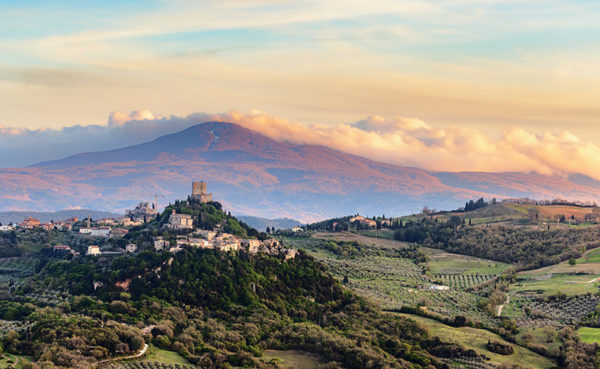
The extinct volcano Monte Amiata towers above the surrounding countryside, offering winter skiing around Piancastagnaio and Arcidosso, and wildflower-filled pastures in spring.
The mountain villages of Castel del Piano, Abbadia San Salvatore and Santa Fiora retain a strong sense of identity and are well worth exploring for their historic centres and relaxed pace of life.
Closer to the Lazio border, the countryside becomes wilder and more wooded. Here you’ll find Pitigliano, Sovana and Saturnia, a trio of enchanting towns with Etruscan roots and spectacular settings. Saturnia, in particular, is known for its natural hot springs — perfect for a restorative soak after a day of exploring.
When to visit: weather in Tuscany by season
Tuscany experiences four distinct seasons, each offering a different mood, set of activities, and visual charm. Whether you prefer blooming hillsides, sun-drenched vineyards or misty medieval towns, the weather in Tuscany plays a big part in shaping your travel experience.
Here’s a seasonal breakdown to help you decide the best time to visit Tuscany:
Spring (April-May)
Temperatures: Mild, ranging from 10°C to 23°C (50°F to 73°F)
Sunshine: Up to 10 hours a day, especially in May
Rain: Some showers early in the season, tapering off in May
What to expect: Spring is one of the most beautiful times to visit. Tuscany bursts into colour with blooming wildflowers, green vineyards, and vibrant local festivals. It’s ideal for hiking, sightseeing, and food and wine tours.
Travel tip: Pack layers; warm days can turn into cool evenings.
Summer (June-August)
Temperatures: Highs in the mid-20s to low 30s°C (70s–90s°F), occasionally hotter
Sunshine: Long, sunny days with up to 12 hours of daylight
Rain: Very little rainfall
What to expect: Tuscany in summer is buzzing with tourists. Cities like Florence and Siena can be crowded and humid, but it’s a fantastic time to explore the Tuscan coast, attend open-air festivals, and enjoy al fresco dining under the stars.
Travel tip: Book ahead and stay hydrated. Consider heading to the mountains for cooler air.
Autumn (September-October)
Temperatures: Comfortable, ranging from 20°C to 26°C (68°F to 79°F)
Sunshine: Warm days with gradually shorter daylight hours
Rain: Some rain, particularly in October
What to expect: Autumn brings the grape and olive harvests, wine festivals, and beautiful changing foliage. Crowds thin out, and the countryside takes on a golden glow, making it a photographer’s dream.
Travel tip: Pack a light jacket or jumper for cooler evenings.
Winter (November-March)
Temperatures: Cooler, with highs between 5°C and 15°C (40s–50s°F)
Sunshine: Shorter days, but still with occasional clear skies
Rain: Wetter season, with more frequent showers
What to expect: Tuscany in winter is peaceful and atmospheric. Major cities like Florence and Pisa are quieter and more enjoyable without the crowds. In the hills, towns like Abetone offer skiing opportunities, and Christmas markets and winter festivals add local flavour.
Travel tip: Some rural hotels and agriturismos may close for the season, so check ahead before booking.
Practical travel tips for Tuscany
Planning a trip to Tuscany means thinking beyond just where to go. You also need to know how to get around, when to book, and what to expect in day-to-day life. Whether you’re visiting for a long weekend or a month-long stay, here are some practical tips to help make your trip smoother.
Getting there
By air: Tuscany’s main international airport is Florence Peretola (FLR), with Pisa’s Galileo Galilei Airport (PSA) also serving many international and low-cost flights.
By train: Italy’s rail network is efficient, with fast connections from Rome, Milan and Venice to major Tuscan cities like Florence, Pisa and Arezzo.
By car: Hiring a car is ideal for exploring rural Tuscany, where buses and trains are less frequent. Driving also gives you the freedom to visit hilltop towns and off-the-beaten-track wineries.
Getting around
Public transport: Trains connect most major towns, and regional buses serve smaller villages. However, services can be limited on Sundays or public holidays.
Driving tips: Roads can be narrow and winding, especially in the countryside. Many historic centres have ZTL (limited traffic zones) — enter without a permit and you risk a fine.
Parking: Expect to park outside town centres and walk in. Paid parking is common, so keep change or a contactless card handy.
Booking accommodation
Best times to book: For spring and autumn, book 2–3 months ahead. In summer, it’s ideal to book even earlier, especially in popular spots like Chianti or Val d’Orcia.
Types of stays: Choose from city apartments, countryside villas, agriturismos (farm stays), or historic hotels in medieval town centres.
Off-season stays: Winter is quieter and cheaper, but some rural stays may close — always check ahead.
Language and etiquette
Language: Italian is the official language in Tuscany. English is widely spoken in tourist areas, but learning a few phrases in Italian will be appreciated.
Dining: Meal times are later than in some countries. Lunch is generally from 12:30 to 2:30 pm, and dinner is often after 7:30 pm. Tipping is optional, but rounding up or leaving small change is customary.
Shops and closures: Many shops close for a long lunch break (riposo), especially in smaller towns. Sundays can be quiet outside major tourist centres.
Money and costs
Currency: Euro (€). Card payments are widely accepted, though it’s wise to carry some cash in rural areas.
Cost of living: Tuscany can be pricey in tourist hotspots, but smaller towns and local trattorias offer good value.
Markets: Local produce markets are a great way to shop affordably and soak up local life. Look for weekly markets in towns like Arezzo, Lucca, or Greve in Chianti.
Tuscany travel guide FAQs
Q: How long do I need for a holiday in Tuscany?
That depends on what you want from the trip. If you’re focusing on the major cities, like Florence, Pisa, and Siena, a 3–4 day break can cover the essentials. But if you want to experience the countryside, wine towns, beaches or smaller villages, aim for at least a week, preferably two.
A three-week trip allows for a more relaxed, immersive experience, especially if you’re planning a mix of cities, coast and country.
Q: Do I need a car in Tuscany?
A car is essential for exploring rural Tuscany and hilltop towns like Montepulciano or Volterra. But if you’re sticking to major cities, public transport is reliable and affordable.
Trains link Florence, Pisa, Lucca and Arezzo, while buses cover smaller towns. However, timetables can be patchy on Sundays and public holidays.
Important: Watch out for ZTL (Zona a Traffico Limitato) zones in historic centres. These are restricted to local vehicles, and driving into them without a permit can lead to hefty fines.
Q: Is Tuscany expensive?
Tuscany can be pricey, especially in Florence or Chianti. But there are ways to visit affordably:
- Stay in smaller towns or agriturismos (rural farm stays).
- Eat at local trattorias instead of tourist hotspots.
- Visit in the off-season (Nov–March) or shoulder months like April, May, September or October.
- Free festivals, scenic walks, and occasional museum free-entry days help stretch your budget.
Q: Does Tuscany have beaches?
Yes, Tuscany has a beautiful and varied coastline. And whether you want beach clubs or unspoilt nature, Tuscany has it all.
Versilia offers lively resort towns like Forte dei Marmi with sandy beaches and good facilities. Cala Violina, near Follonica, is a quieter, more natural spot with white sand and clear water.
Marina di Alberese, near Castiglione della Pescaia, is backed by pine woods and wild countryside in the Maremma Natural Park.
Q: Which UK airports fly direct to Tuscany?
You can fly to Tuscany from a number of UK airports, including:
- London Heathrow
- Gatwick
- Stansted
- Manchester
- Birmingham
- Bristol
- Edinburgh
Most flights land at Pisa (PSA) or Florence (FLR). Pisa often has more direct, low-cost options and is well connected to regional trains.
Q: What’s the weather like in Tuscany?
Tuscany has hot summers, mild springs and autumns, and cool winters.
- Summer (Jun–Aug): Best for beaches and festivals, but cities can be crowded and hot.
- Spring (Apr–May) and Autumn (Sep–Oct): Great for sightseeing, wine and food, and fewer crowds.
- Winter (Nov–Mar): Quieter and cheaper, with some great ski options in Monte Amiata.
See the full breakdown in our weather section.
Q: What are Tuscan villages like to live in?
Tuscany has long attracted second-home buyers, especially from the UK and the US. Living in a Tuscan village offers a slower pace of life, close-knit communities and beautiful surroundings. You’ll find:
- Weekly markets, small cafés and seasonal festivals.
- Properties that range from stone farmhouses to modernised apartments.
- A slower rhythm and deep connection to the land.
Some areas, especially in rural zones, may have limited public transport, so a car is a must for daily life.
Q: What’s the property market like in Tuscany?
Tuscany’s property prices are higher than some other regions of Italy, but vary widely. Florence and Chianti command premium prices, while lesser-known villages in southern Tuscany or the Casentino Valley offer better value.
Many foreigners buy second homes or renovate rural properties for rental or retirement. Buying property in Italy involves legal steps and taxes, so it’s wise to hire a local notary (notaio) and seek bilingual legal advice.
Planning your Tuscan escape
Whether you’re dreaming of vineyard views, Renaissance art, hilltop towns or golden beaches, Tuscany delivers timeless beauty and plenty of surprises. From the historic heart of Florence to the peaceful olive groves of Val d’Orcia, every corner of the region invites you to slow down and truly be in the moment.
Whether you’re planning a short city break or a longer countryside escape, we hope this Tuscany travel guide helps you make the most of your time in this extraordinary part of Italy. Wherever your Tuscan journey takes you, buon viaggio!
Enjoyed this Tuscany travel guide? Inspire your next journey with a travel blog: Back to the land in Siena, Tuscany
